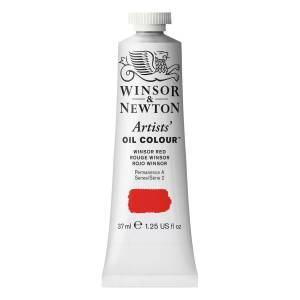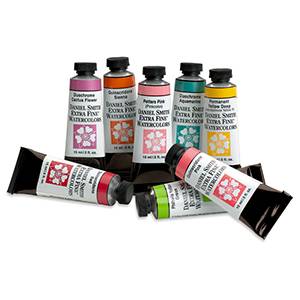Making Blue & Creating Different Shades
The colour blue was first created by the ancient Egyptians who discovered how to create a permanent pigment that they used for embellished arts. The colour blue continued to evolve for a further 5,000 years, and certain pigments were even used by the world's greatest artists to create some of the most famous works of art. Blue is a primary colour that is often used by painters. It appears on the palette more frequently than many other colours, so it's important to learn how to mix different shades of blue. This article will help you better understand the colour blue and will hopefully help and inspire you in your own creative journey.
What Does Blue Represent?
One of the most common associations with blue shades is that of peace and tranquility. Throughout history, humans have been associating blue hues with positive and relaxed mental states. In fact, many scientific studies have shown that this association is wired into our brains. Scans show that simply looking at a cool blue shade can encourage the production of various chemicals that promote relaxation and rest. As part of this relaxation process, blue shades can also suppress the appetite and slow the metabolism.
What Colours Make Blue?
You may be wondering what two colours make blue. The answer is blue is a primary colour, so there is no need to mix any two colours to make blue. However, we are able to create numerous shades of blue through colour mixing. Grab your paint supplies and keep reading to find out more!

Winsor & Newton Professional Acrylic Paints 60ml

FROM $15.90
Atelier Interactive Acrylic Paints 80ml
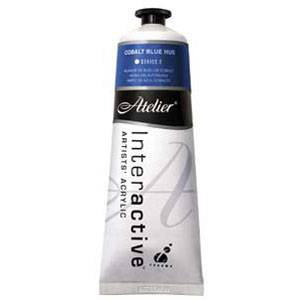
FROM $8.35
GOLDEN Heavy Body Acrylic Paints 59ml
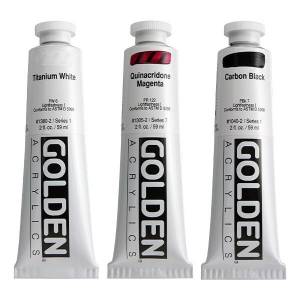
FROM $20.40
Jo Sonja's Artists' Acrylic Paints 75ml
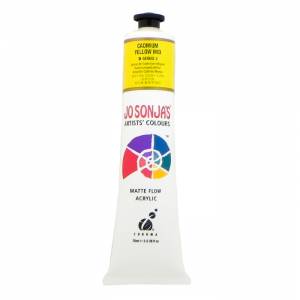
FROM $6.75
Creating a Cool Blue
The trick to making a cool blue is by simply adding a splash of green. The particular shade of green you use will determine your final cool blue hue. The two best green shades for cooling down blues are veronese green and cadmium green.
Firstly, veronese green is an ideal colour for creating cool blue hues, as it has a bright, cool green tone that naturally leans towards light blue. Mixing veronese green with ultramarine blue will result in a very cool, slightly darker blue shade. For a light and bright cool blue, try mixing veronese green with cobalt blue. Secondly, cadmium green is a little warmer than veronese green because it contains a touch of red. This makes it a great choice for painting scenes with a warm, sunny atmosphere.

Creating a Warm Blue
There are two colours that you can mix with a blue shade to make it warmer: alizarin crimson and burnt sienna. The effect of each shade will differ depending on the blue base shade you choose. If you want to make a warm blue, we recommend beginning with a blue shade that is already quite warm, like ultramarine blue.
Firstly, burnt sienna is a darker, warmer shade of red, so combining it with ultramarine blue will create a darker, warmer shade of blue. Burnt sienna is also a little cooler than alizarin crimson, so this combination will be a little cooler in comparison. Secondly, combining ultramarine blue and alizarin crimson, will create a very dark and quite a purple-blue shade. For a more vibrant yet equally warm blue, you can mix alizarin crimson with cobalt blue.

What Colours Make Light Blue?
Now that we know how to make blue warmer or cooler, you might be wondering what colours can create light blue shades. Making light blue hues is actually quite simple. The most common way to make your blue colours a little lighter is by adding a touch of white. The combination of ultramarine blue and white creates a lovely, vibrant shade of cornflower blue. The addition of white paint highlights the warm undertones. For a much brighter light blue, combine cobalt blue with a touch of white. Furthermore, if you’re out of white, a less common way to lighten a blue shade is to add a little yellow or light green. If you choose to use this method, you will notice that not only are you lightening your blue hue, but are also making it slightly cooler at the same time.

What Colours Make Dark Blue?
We know that light blue is made up of different colours, but what about dark blue? While there are only two main colours for light blue, there are three options for dark blue. Whether you want a dark, muted blue, a warm dark blue, or a cool dark blue, you can use different colours to achieve the desired effect.
One of the best ways to create a dark blue shade is to add a touch of dioxazine purple. The addition of this dark purple hue to ultramarine blue creates a very rich dark blue. Dioxazine purple contains red pigments, so combining it with cobalt blue is likely to create a slightly muted dark blue.
Burnt umber is a great way to create dark blue shades with both cobalt and ultramarine blue. The colour will be more muted, with a brownish hue, because it contains red. If you want a very dark blue, burnt umber is your best bet.
The last way to create a dark blue shade is to mix phthalo green and alizarin crimson with your blue shade. This combination of colours simulates the effects of burnt umber, giving you similar results.

Different Shades of Blue in Your Artwork
Blue is a colour that we can't help but love. It invigorates us, calms us, and communicates with us just by existing. Blue goes beyond dimensions, and incorporating this colour into our everyday lives will certainly make us happier, more peaceful, and more insightful of our experiences. You can experiment to create different shades of blue such as the ones below:

Did we answer your questions on what colours make blue and all the different types of blue you can create? We hope that through this article, we have inspired your appreciation for the colour and that you'll use it more in creating your best works of art. If we’ve inspired you to get creative you can find our handy paint supplies here, including acrylic paints, oil paints, watercolour paints and gouache paints. Plus what’s paints when you don’t have brushes? Check out our brush range here, including acrylic brushes, oil brushes, watercolour brushes and even brush sets!
Related Articles


